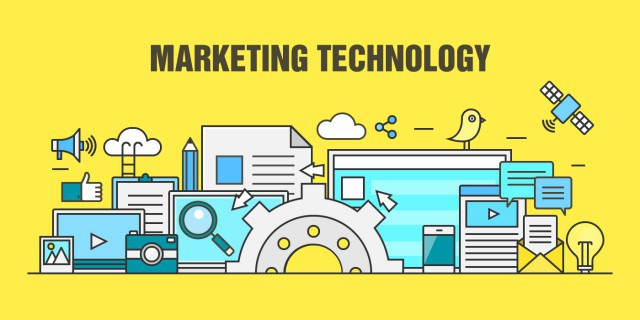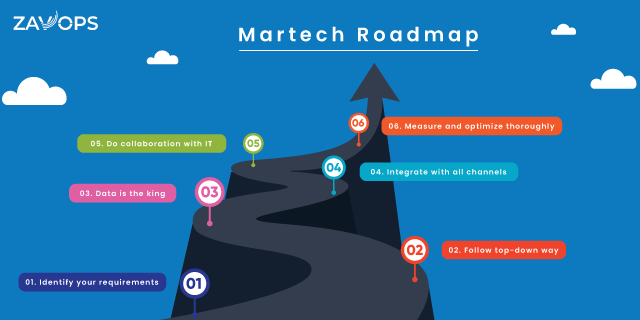As per a recent research, 68% of martech leaders face challenges utilizing their stacks’ full breadth of capabilities. Do you feel you’re one of those marketers?
Well, you’re not the only potato in the bucket!
No doubt the pandemic renewed the focus on expanding the utilization and use of the marketing technology stack, but marketers are still struggling to take full advantage of their existing tools and Martech Implementation Strategies.
Marketing Technology Stack Capabilities
To them, it can feel like there’s a never ending list of things that should be done to improve their business’ bottom line, and to some degree there’s truth to that. In facing the reality of nearly limitless strategy and tactical possibilities, it is highly crucial in the current scenario to build an effective Martech Implementation Strategies. Marketing technologies are the software tools that aid marketers in optimizing their strategies and achieving specific objectives.
But only building the stack isn’t enough! You must know how to and leverage that too. Advertising technology, or adtech, is a subset of martech focused on managing and executing digital advertising campaigns. No clue how to do that? No worries! We’re here to help you out.
Today, in this blog, we’ll address what a martech stack is in addition to some critical key strategies and components one should include when building an effective marketing stack. Also, we’ll touch points like how to build a MarTech stack and how to build a Martech Implementation Strategies that modernizes your marketing processes, provides value for money, and helps grow your business?
This guide will take you through everything you need to know. So without further ado, let’s get started!
What is a Martech Stack?
A Martech Stack is essentially a cluster of technology-based tools that digital marketers use to efficiently perform marketing activities, across various digital channels. Martech stacks often vary from business to business depending on both the size of the business and their priorities. You can know more about Martech in a detailed way in one of our blogs.

If you use a martech tool, chances are that you use more than one. The name for the ecosystem of all of your martech tools is a martech stack or marketing technology stack. Marketing technology stack generally refers to the “stacking” of different marketing technology tools that are more or less connected to each other and can be used by a business. Customer data is crucial in creating unified customer profiles and enhancing marketing strategies.
Marketers use it to perform, analyze, and improve their services. Martech stacks are increasingly more prevalent and relevant to the way businesses work.
In fact, the overall average is 88 solutions per stack, having grown 22% over the past four years. Analytics and data management is a crucial aspect of handling various categories of martech applications.
Why do you need a MarTech stack?
Manually handling everything a modern marketing department needs to do is simply too time-consuming and inefficient to be practical. By automating certain digital tasks with a robust marketing tech stack, you optimize your processes, integrate performance-boosting elements to your campaigns, and free up your team’s time to concentrate on developing more strategic initiatives.
Beyond boosting efficiency, MarTech stacks can enable better decision-making. With the sheer amount of information available to today’s marketing teams, you need tools that swiftly transform masses of data into actionable insights. Martech Implementation Strategies helps you make smarter, data-driven choices by collecting and analyzing the numbers for you.
By selecting the right marketing tools, your team will be better positioned to create, deliver, monitor, and refine its marketing campaigns. With a carefully chosen MarTech stack, your team can generate more leads, drive more traffic, increase engagement, and boost conversions.
A MarTech Stack typically consists of a few core tools, although the specific tools used can vary from company to company. Some companies have complex MarTech Stacks, while others rely on the essentials. A complete MarTech Stack should address every stage of the marketing cycle: attracting, engaging, converting, managing, and understanding your target customer. Some of the most common tools and technologies in the MarTech Stack include:
- Digital Asset Management – This solution is widely considered the heart of the MarTech Stack. It’s where your content is aggregated and managed. As content is the driving force behind marketing, having a single, centralized resource for managing a large volume of digital assets is the key to marketing efficiency and effectiveness.
- Analytics Tools – You can’t improve what you can’t measure, and that’s why today’s enterprises rely on analytics solutions more than ever before. The competitive landscape is tough in many industries, forcing marketers to constantly step up their game to outpace the competition. Analytics tools provide a quantifiable means of measuring the effectiveness of marketing messaging, campaigns, channels, and more.
- Lead Management – Lead management tools help marketers engage, nurture, and qualify potential leads to determine sales-readiness.
- Customer Relationship Management – These tools help companies keep track of their customer base, providing a central resource for sales and customer relationship team members who need to interact with customers and prospects. Email marketing may be a built-in technology or procured as a separate service, but seamless integration is essential between a CRM and email marketing solution.
- Marketing Automation – Another technology often integrated with email marketing and CRM, marketing automation tools can streamline the process of nurturing leads by initiating specified actions based on consumer behavior.
- Content Management System – These solutions allow marketers to manage a company’s web presence, including primary websites, blogs, landing pages, and more.
- Social Media Management – Social media management tools simplify the process of managing and engaging users across the many social media platforms today’s consumers use.
These are just a few of the common technologies that exist in most modern MarTech Stacks. With thousands of tools and technologies in the MarTech landscape, it’s quite possible that no two companies’ MarTech Stacks are alike.
Creating an Efficient Workflow
Creating an efficient workflow is crucial for maximizing the potential of your martech stack. A well-designed workflow enables your marketing team to execute tasks seamlessly, reducing manual work and increasing productivity. Here are some tips for creating an efficient workflow:

- Identify Tasks for Automation: Start by identifying the tasks that need to be automated and prioritize them based on their impact on your marketing strategy. This could include email marketing, social media posting, or lead nurturing.
- Choose the Right Martech Tools: Select martech tools that can integrate with each other and automate tasks efficiently. Ensure that these tools align with your overall marketing strategy and business goals.
- Define Roles and Responsibilities: Clearly define roles and responsibilities for each team member to ensure that everyone knows their tasks and deadlines. This helps in avoiding confusion and ensures accountability.
- Establish a Centralized Dashboard: Use a centralized dashboard to track progress and monitor performance in real-time. This provides a holistic view of your marketing efforts and helps in making data-driven decisions.
- Continuously Review and Refine: Regularly review and refine your workflow to ensure that it remains efficient and effective. This involves analyzing performance metrics and making necessary adjustments to improve processes.
By creating an efficient workflow, you can streamline your marketing processes, reduce costs, and improve customer experience. An optimized workflow not only enhances productivity but also ensures that your marketing team can focus on strategic initiatives that drive business growth.
Measuring Success and Optimizing Your Marketing Strategy
Measuring the success of your martech stack is essential for optimizing your marketing strategy. Here are some key performance indicators (KPIs) to track:
- Website Traffic and Engagement Metrics: Monitor metrics such as page views, bounce rate, and time on site to understand how users interact with your website.
- Lead Generation and Conversion Metrics: Track lead volume, conversion rate, and sales qualified leads to measure the effectiveness of your lead generation efforts.
- Customer Acquisition and Retention Metrics: Measure customer lifetime value, churn rate, and retention rate to assess your customer acquisition and retention strategies.
- Return on Investment (ROI) and Return on Ad Spend (ROAS): Calculate ROI and ROAS to determine the financial effectiveness of your marketing campaigns.
By tracking these KPIs, you can identify areas for improvement and optimize your marketing strategy to achieve better results. Here are some tips for optimizing your marketing strategy:
- Use Data Analytics Tools: Leverage data analytics tools to gain insights into customer behavior and preferences. This helps in making informed decisions and personalizing marketing efforts.
- Conduct A/B Testing: Perform A/B testing and experimentation to identify the most effective marketing tactics. This allows you to optimize campaigns based on real data.
- Continuously Review and Refine: Regularly review and refine your marketing strategy to ensure that it remains aligned with your business goals. This involves analyzing performance metrics and making necessary adjustments.
- Use Marketing Automation Tools: Implement marketing automation tools to personalize and optimize customer interactions. This enhances customer experience and improves conversion rates.
By measuring success and optimizing your marketing strategy, you can improve the effectiveness of your martech stack and achieve better business outcomes. Continuous optimization ensures that your marketing efforts are always aligned with your business objectives.
Common Martech Implementation Mistakes to Avoid
Implementing a martech stack can be complex and challenging. Here are some common mistakes to avoid:
- Not Defining Clear Business Goals and Objectives: Before implementing a martech stack, it’s essential to define clear business goals and objectives. This will help you choose the right tools and ensure that your martech stack is aligned with your business strategy.
- Not Choosing the Right Tools: Choosing the right martech tools is critical for success. Make sure to choose tools that integrate with each other and meet your business needs. Avoid selecting tools based solely on trends or recommendations without assessing their fit for your specific requirements.
- Not Integrating Tools Properly: Integrating martech tools properly is essential for ensuring that they work together seamlessly. Make sure to choose tools that have pre-built integrations and APIs. Proper integration ensures data consistency and smooth workflow across different platforms.
- Not Training Team Members: Training team members is essential for ensuring that they can use the martech tools effectively. Make sure to provide comprehensive training and support. This helps in maximizing the potential of the tools and ensures that your team can leverage them to their full extent.
- Not Monitoring and Optimizing Performance: Monitoring and optimizing performance is essential for ensuring that your martech stack is working effectively. Make sure to track key performance indicators (KPIs) and refine your marketing strategy accordingly. Continuous monitoring helps in identifying issues early and making necessary adjustments.
By avoiding these common mistakes, you can ensure that your martech stack is implemented successfully and achieves better business outcomes. A well-implemented martech stack not only enhances marketing efficiency but also drives business growth by aligning with your overall strategy.
What are the top things to consider while building a Marketing Automation implementation strategies?
Here are some best practices for developing a winning martech strategy:

- Identify your requirements – While this part may sound obvious, it’s easy to rush over the fundamentals and end up with a MarTech stack that fails to meet your requirements – or one that is hugely overblown. In fact, research from Gartner found that just one in three organizations believe their MarTech stacks effectively meet their business needs. And with the average CMO spending 29% of their budget on MarTech tools it’s business-critical to get the basics right, or you risk wasting time, money, and resources on inadequate tools. A good way to avoid purchasing irrelevant or unnecessary technologies is by asking which problem areas your MarTech stack needs to address.
- Follow top-down way – Build a martech stack in a top-down manner, starting with the company’s overall marketing strategy and goals. By thinking in broad terms of high-level objectives, you will reach better decisions on what specific capabilities and measurements you need to support.
- Data is the king – Carefully consider all existing data sources that should be integrated to achieve your martech goals, and ensure that the solutions you select can work with those sources. Having a complete customer profile, based on all available data, is critical.
- Integrate with all channels – Carefully consider all the marketing and communication channels that you need now – as well as those you expect to use in the foreseeable future. Only through effective coordination among all channels – email, SMS, on-site/in-app, online advertising, social media, call center, etc. – will your martech stack enable you to optimize the overall customer experience. No more silos!
- Do collaboration with IT – Work closely with IT during the definition, selection and implementation stages. While the goal of most martech solutions is to free marketers from extensive reliance on IT, the participation and buy-in of the IT department is almost always necessary for building (and maintaining) a productive martech stack. Integrating project management tools can also significantly enhance workflow efficiency and productivity in marketing activities.
- Measure and optimize thoroughly – Continuously measure and optimize how your martech strategy is working. Don’t be afraid to rethink decisions and make changes as required!
Tips for Hiring the Right Martech Tools Specialist
When hiring a freelance marketing automation specialist, consider the following:
- Define Your Objectives: Be clear about your marketing objectives and project scope.
- Evaluate Skills: Look for skills in automation tools, analytics tools, and campaign management.
- Check Track Records: Ensure the freelancer has a proven track record of successful projects.
Hiring the right expert ensures that your marketing strategies are aligned with your goals, resulting in higher efficiency and improved outcomes.
By integrating the above strategies and leveraging the power of fractional talent expertise, your business can stay ahead of the curve and achieve unparalleled success.
Need Help Building Your Martech Stack?
Join forces with Zavops today—it’s simple:
- Describe your project: Schedule a brief call to discuss your Martech stack implementation needs and business goals.
- Meet your expert: Within 48 hours, Zavops will connect you with a top-tier Martech expert from its elite network.
- Launch your strategy: Start optimizing your Martech stack implementation with a specialist onboard in as little as three days.
Beyond individual experts, Zavops also provides fractional experts to support your team during high-demand periods. Whether you need assistance with marketing automation, CRM integration, analytics tools, SEO, PPC, or crafting a complete Martech stack strategy, Zavops offers custom hire marketer programs designed to fit your business needs.






